#lms engines
Explore tagged Tumblr posts
Text
I heard that increased power was to be provided for this train, and waited in pleased anticipation of a Class 5X or a Baby Scot. On 18 January 1937 there arrived at Ayr for the 7.46am Caledonian class 60 4-6-0 No 14641! I am not exaggerating when I say that of all classes of engine employed on main line express work at that time, none had a poorer reputation than the Caley 60s. My own runs behind them had been dull in the extreme. I knew an LMS official (ex-Caley) who commuted by the 7.46am, and in conversation I ventured to hint that the authorities might have done something better for that train. He was shocked. 'Oh, but these are grand engines!' he protested.
- David Smith, Legends of the Glasgow & South Western Railway (in LMS Days)
#thus begins the ex-caley cohort's mission to inflict errrrrm *donate* 60s to the ex-g&sw section sdafkl;sadf#THE 60S WILL CONTINUE TO ARRIVE UNTIL MORALE IMPROVES#WHY DON'T YOU LOVE USSSSSS#real true railway stuff#glasgow and south western engines#lms engines#caledonian engines#david l. smith
24 notes
·
View notes
Text

🚂 Day 6 - Harmony 🎵
I had to do something for Traintober and the idea of Harmony brought me the idea of a quartet of Barbershop singers composed of well dressed lovely Jinties in pixel art
#ttte fanart#jinty#jinty locomotive#LMS Fowler Class 3F#pixel art#train#thomas the tank engine#thomas and friends#traintober 2024#traintober
267 notes
·
View notes
Text



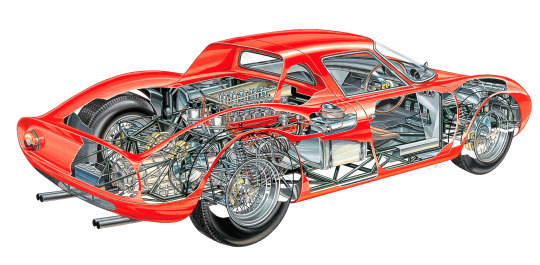

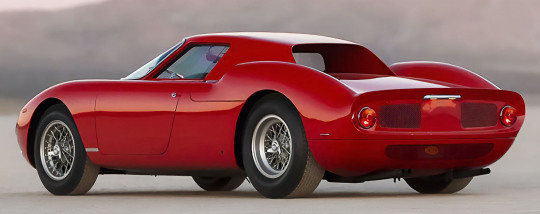
Ferrari 250 LM Prototipo, 1963. Designed at Pininfarina this was Enzo Ferrari's blatant attempt to flout FIA rules and race the mid-engined car in the Group 3 GT class without the requisite 100 road cars being built. Ferrari's influence with the FIA wasn't as great as he had hoped and the car was disallowed and could only race in the prototype class.
#Ferrari#Ferrai 250LM#mid-engine#Ferrari 250 LM Prototipo#Prototype#1963#race car#track car#Group 3#V12#Pininfarina
648 notes
·
View notes
Text
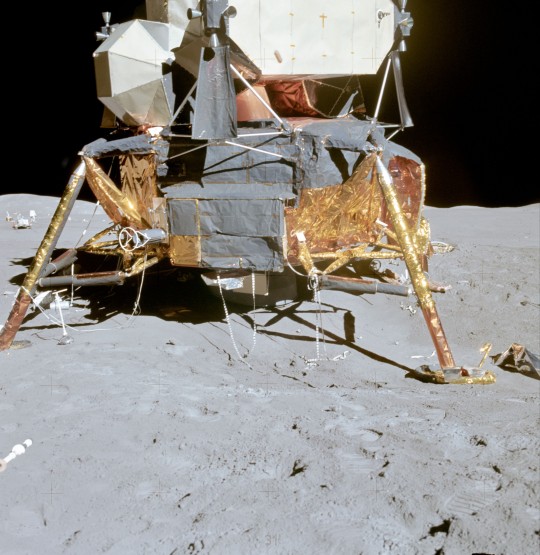
Southeast view of Apollo 15 Lunar Module (LM-10) Falcon, with the Lunar Roving Vehicle (LRV), Apollo Lunar Surface Experiments Package (ALSEP) and Hill 305 in the background. Photographed during the second Extravehicular Activity (EVA 2) of the Apollo 15 mission.


Decreased clearance led to buckling of the extended descent engine nozzle on the landing of Apollo 15.
"In order to extend landing payload weight and lunar surface stay times, the last three Apollo Lunar Modules were upgraded by adding a 10-inch (25 cm) nozzle extension to the engine to increase thrust. The nozzle exhaust bell, like the original, was designed to crush if it hit the surface. It never had during the first three landings, but did buckle on the first Extended landing, Apollo 15."
-information from Wikipedia: link
Date: August 1, 1971
NASA ID: AS15-87-11839, AS15-87-11842, AS15-88-11882
#Apollo 15#Lunar Module#LM-10#Falcon#NASA#Apollo Program#J-type mission#Moon Landing#Moon#Hadley–Apennine#Descent Propulsion System#Lunar Module Descent Engine#LMDE#Lunar descent stage propulsion#TRW VTR-10#Rocket Engine#August#1971#my post
35 notes
·
View notes
Text


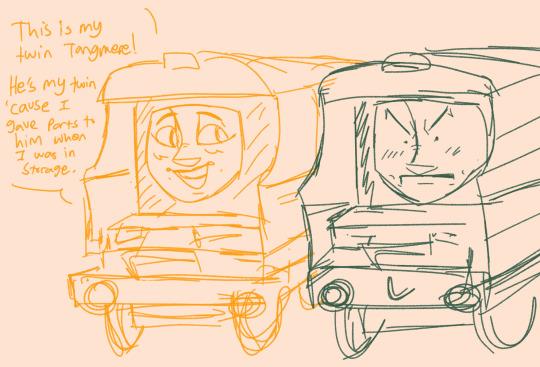
Troublesome Tangmere and 249 Squadron Reliable Rebecca!
In an ideal world, we could've had a story where Tangmere causes good old Sundrian Confusion and Delay and then promptly eats shit.
Rebecca as 249 Squadron wasn't my idea, but it's been ingrained into my head nonetheless. I like the idea of a Rebecca that spent most of her life in scrapyards and storage and then still coming out singing- quite literally! But the trauma of it is still very much there, just... lingering. I imagine 'What Rebecca Does' was one of those moments where her anxiety and self doubt got the better of her- she only spent a short while on rails, and while she did pull expresses like The Night Ferry back on the mainland, here on Sodor it seemed that everyone is much more.... experienced and worldly and cool, and most of all, they got modifications and rebuilds to work around their design flaws while Rebecca is still very much an unrebuilt bulleid pacific. Poor girl's not sure what she can really do, after all these years and with her mechanical problems. This isn't even getting into when she WAS in service- her family was fine, and quite loving actually- and the ex SR engines were a decent sort! Everyone else, however...
#this is all to say that i heart rebecca. and i think the bulleids should get more attention in ttteblr CAN WE GET A HURRAY FOR THE BULLEIDS#live from tidmouth#creative on the mainline#ttte#thomas and friends#thomas the tank engine#ttte rebecca#ttte oc#ttte oc tangmere#stream pollyanna by catherine warwick and maybe you'll understand rebecca as a character#ALSO i imagine that the bulleid pacifics were... looked down upon by the lms and lner pacifics shall we say#the sr engines were probably ignored at best#but i think the other pacifics saw an easy target in the merchant navies and west country/battle of britains because of how... shall we say#rather janked the classes were#which led to the bulleids becoming both supportive yet also very defensive#rebecca's defensiveness manifested more positively. with her not taking stuff personal and playing along#her siblings... not so much#tangmere in particular will go for the jugular if you tease him even slightly#and also im writing a series of rebecca one shots from start of service to being sent to sodor#we'll see if i manage to post even one....
140 notes
·
View notes
Text
Live action Henry and Toad
Got these two in the post.

My first OO scale tender engine and let me tell you the detailing pack has so many little extra bits for customization... but it's a beautiful model.

It's funny how they always call Thomas a "little" engine, but he's fairly good size in comparison. These are the same scale.

And last off my little gronk taking off with Toad, pulling a break van ride; which gronks are commonly used for these days, apparently.
#thomas and friends#thomas the tank engine#ttte#ttte diesel#ttte henry#ttte thomas#ttte toad#bachmann trains#LMS Stanier 5MT#Black 5#Toad break van#Gronk#BR Class 08
23 notes
·
View notes
Text


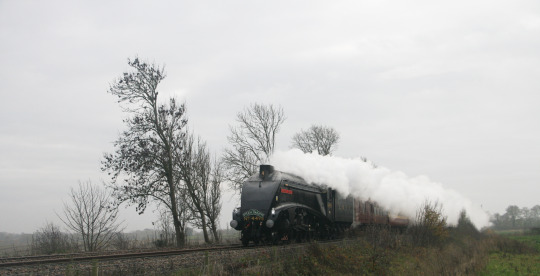
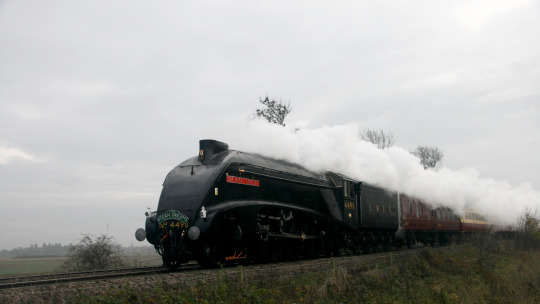




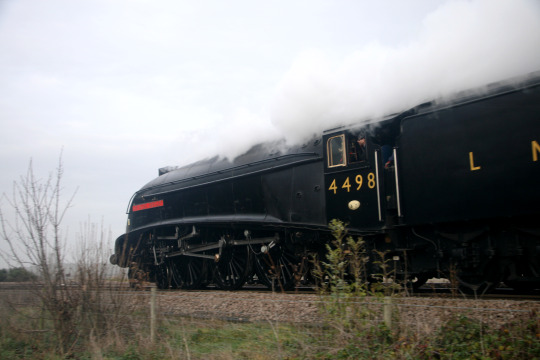



















Steam on the Main Line
#duchess of sutherland#lms#br#steam engine#steam train#steam locomotive#LNER#GWR#British Railways#sir nigel gresley#clun castle#royal scot#winter#summer#spring#railway#train#photography#my photos
39 notes
·
View notes
Text


Henry and his real-life basis; an LMS Stanier Black Five 4-6-0.
20 notes
·
View notes
Text
How Did the Big 4 Affect Ideas About Scrap for the Steam Engines:
Alright, so in the Railway Series, we know that scrap and the idea of scrap is horrifying to the engines. But the real question is: was this a universal thing? Were all the engines equally horrified, or were there differences.
I mean, from that one infamous illustration in the Railway Series, it seems pretty universal...
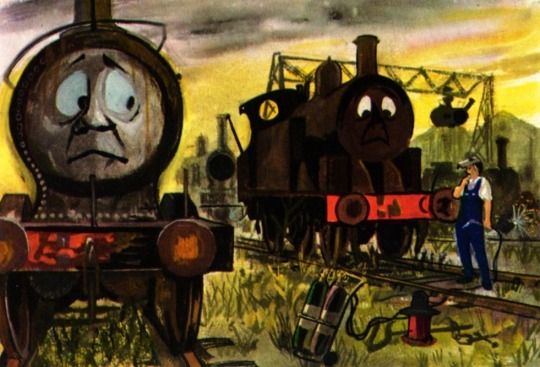
But I think that if we dive a little deeper, there may be a few other factors at play, which collectively create very different views on scrap - and they all have to do with the Big 4. I'm going to explain them by size, so let's start giant and get smaller.
LMS:
The LMS engines would not be as surprised to hear they're being replaced and scrapped as other companies. Why? Well, we have to look back a bit. In the 1920's, the LMS was a bit of a hodgepodge of constituent railways and their engines. The Midland 'small-engine' policy did mean that a lot of the bigger engines were frowned upon, but in general the engines were just... there.

This changed with Stanier. When Stanier came along, he began building larger, faster, more powerful engines - and thus a lot of the older, smaller classes were axed. Engines classes like the Black Fives, Coronations and 8F's could do the work of these older engines much better!

There was only one class of engine built by the Furness that survived into BR ownership, and they weren't the only company with this happening. The engines of the LMS would've been accustomed to these ideas. And where does D261 come from? Well, the Class 40 diesels were used on the West Coast Mainline - D261 would be very used to the steam engines being very accepting of the idea that this was 'their time', and therefore stunned at how the Sodor engines acted.
The opposite end of this was that smaller engine classes were very afraid of being withdrawn. Edward's a great example of this - he watched his entire railway be taken over and all his friends and family replaced - and he fears he might be next. It drives him to extreme lengths to prove his worth, just to try and gain a few more years. Donald and Douglas are another example of this; as Caledonian Railway engines, they were generally under the threat of being scrapped all through their careers, and this created a desire to prove themselves and survive.
The LMS as a company committed to this 'purge' of smaller, older classes, and thus the engines of the LMS would have been far more used to and accepting of the idea of being scrapped as compared to others. It was part of the company culture! It wasn't universal by any means, but it had an impact, especially in the English part of the LMS.
LNER:
The exact opposite of the LMS. The LNER was a railway that was throughout its existence very, very poor. And while it did build some stunning-looking express engines...
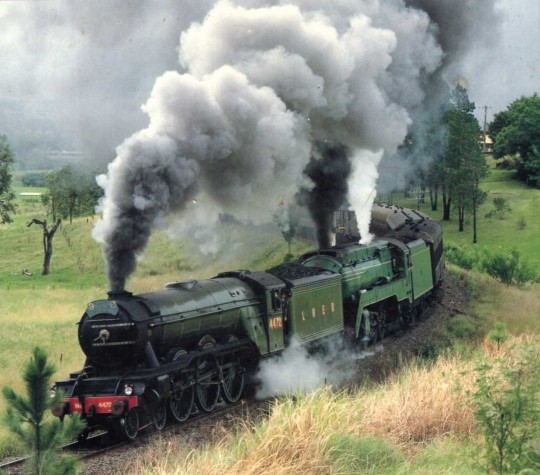
... in actuality, many of the engines running on the LNER were constituent engines that were just kept going. A good example of this would be the C1 Atlantics, which were introduced in 1902, and weren't completely withdrawn until 1950!
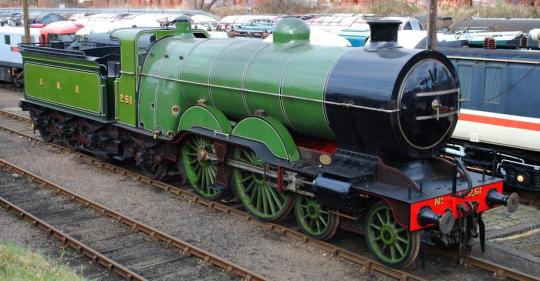
The LNER just didn't have the money or the ability to commit to a drastic newbuild scheme like the LMS did. That isn't to say that old engines weren't scrapped, but it did mean a lot more of the older classes weren't. And when a large body of engines survive for 50 odd years, the culture of elongated existence survives with them. Gordon is so badly affected by the Modernisation Plan personally because his company culture was one of preservation and extended service. His brothers would have quite happily told him that even when they were supplanted by the A4's that they'd be around for a long time yet, because that's how the LNER worked. And then they weren't and Gordon was stunned.
And remember, the LNER is the railway that preserved City of Truro alongside a bunch of its elderly engines at York. This railway had a culture that was built around a sort of trickle-down duties. As express engines were supplanted, they simply moved down the chain.
Speaking of City of Truro...
GWR:
This is another railway whose engines are stunned by the Modernisation Plan, but for a very different reason. Both the GWR and the LMS scrapped a large number of engines in the 1930's, but unlike the LMS, the GWR focused on engines who were at the end of their useful lifespan.
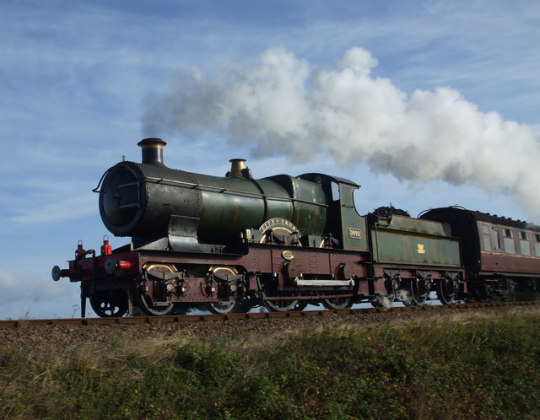
City of Truro was around 30 when withdrawn. For an engine introduced at the same time as the C1 Atlantics, this seems short - but its about average for the GWR at the time. The shock to the GWR engines is not the fact they're being scrapped - it's the fact that engines not at the end of their useful lifespans are being scrapped.
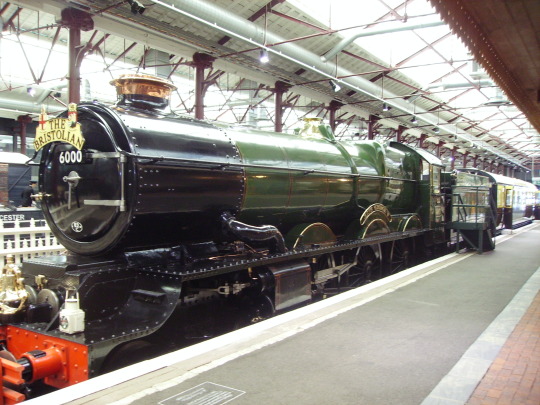
The King class was built in 1927 and nearing the end of their lifespan, but the Modified Halls weren't, and neither were the 9400's. Their withdrawal and subsequent scrapping was what really shocked Western engines.
Oliver's class was built in the 1930's, and would have expected to survive into the late 1960's and 1970's. The sudden withdrawal of them all would have been a great shock, and one of the driving factors behind his escape.
And then in the Railway Series, Duck doesn't act all that surprised to hear steam engines are being cut up - but he is hostile to diesel engines. The reason? Because diesel engines aren't just replacing the old engines in the natural GWR order of things, but supplanting the entire lot. He's relatively fine with Bear though because unlike many of the other diesels, Bear's class could be very easily perceived as being a natural progression of GWR engines. They took over the jobs of Castles and Kings - engines built in the 1920's and nearing the end of their GWR lives. There is of course also his outburst, which gives off a very GWR vibe - telling an engine off for insulting another railway? I wonder which of our Famous Eight has also done that...
Southern:
Right, so the Southern is possibly the most interesting case of them all. And the reason for that is this:
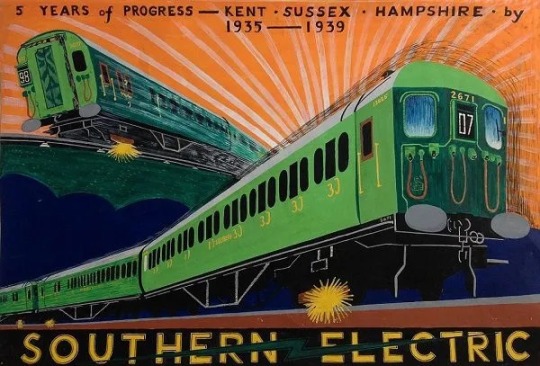
The Southern Railway was both the smallest of the Big 4 and the most passenger orientated. As such, they naturally gravitated towards a program of electrification, which they saw as the best way to maximise their profits. Engines on the Southern would have been invariably told that they would be withdrawn someday when the electrification reached their part of the line. That is a level of certainty that would have a massive impact on how the engines viewed their fate.
It also meant that the Southern Railway was not focused on replacing the steam engines they already had with new ones. This allowed some truly ancient engines to make it to British Railways.
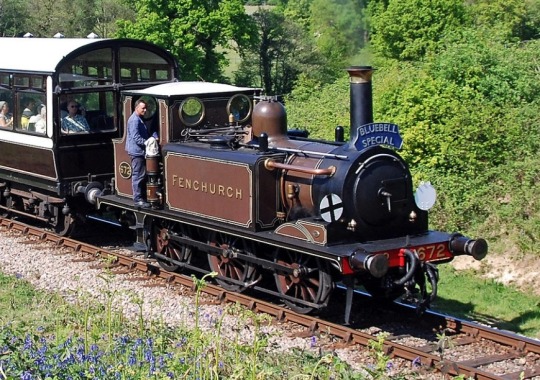
This is Fenchurch, and when withdrawn in 1963 he was the oldest engine working on British Rail. He was built in 1872 - so that's a career of 91 years. And another class that was hitting pensioner years in British Rail was the Adams Radial Class, built in 1882. Both Southern Railway engines that found a niche duty that wasn't going to be electrified or upgraded anytime soon.
Even the E2's had their own niche at Southampton docks! They were a failure of a class when built, and yet were still in service in the 1960's. Thomas the tank engine himself has remarkably little to say about modernisation in the books - his job is threatened by a diesel, and while he's horrified that it's a diesel, he's not shocked he's being replaced. Even though he spent a tiny amount of time in the south, its culture managed to penetrate his smokebox.
But there is one other railway that has a central role in this, and it is of course British Railways.
British Railways:
Right, so this is the one company that is the cause of much of the above commentary to become obsolete. When amalgamated, British Rail was meant to electrify the country's railways slowly and steadily, with steam engines making up the difference. And at the onset, they withdrew and scrapped many of the older, smaller classes of engines and replaced them with the Standards - something very similar to LMS and GWR practice, and also not unfamiliar to the LNER. The really problem comes with the Modernisation Plan in 1955.
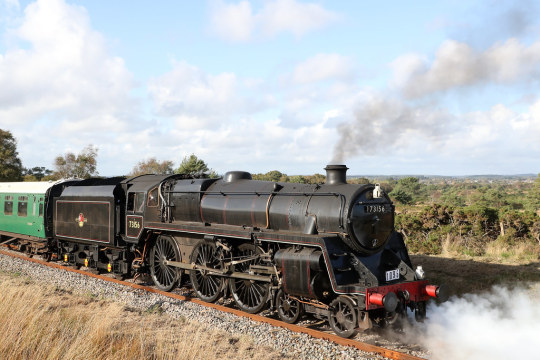
The Standard Five class were built until 1957 - two years after the publication of the Modernisation Plan which explicitly stated that BR would scrap all steam. The 9F's were being built until 1960. At the longest, these engines got less than twenty years. At the youngest, some were withdrawn after only five years.
And that's what shocked all the older engines. It's not the fact they're being scrapped - ever since the conception of the railways, engines have been being scrapped. It's the magnitude of the scrapping and the wanton destruction of young, healthy engines. It's not that they're being replaced - that was always going to happen, all the engines knew that. It's the speed of the Modernisation Plan, the scrapping of brand new engines and the fact that steam engines were replaced with Pilot scheme diesels who were mostly failures.
That's what caused the engines to fear scrap and hate diesels.
And while I would love to delve into the diesels and what happened to them, that's its own massive thing.
I would like to note that this does not really take into account specific incidents, but rather general trends that would have led to more widespread knowledge. The single incident involving one engine in Aberdeen doesn't really permeate railway gossip and ideology, but an entire class being withdrawn does.
I would also like to acknowledge the fact none of the above pictures are mine.
#ttte edward#ttte gordon#ttte donald#ttte douglas#ttte oliver#ttte duck#lner#LMS#gwr#southern railway#british rail#long reads#weirdo shit#I thought I'd share this brainfart#thomas the tank engine#railway series#railways#britain
179 notes
·
View notes
Text
What in the Sam Hill...
Before I tell you this story you must know the characteristics of the two men principally involved, drivers Sam Mitchell of Corkerhill and Sam McKnight of Girvan. Both were highly competent enginemen. Both knew that this was so, but Mitchell regarded all Girvan men as only one jump off the plough-boy, and lost no opportunity of taking them down. Both Mitchell and McKnight were well-educated men with a fine command of correct English, and Mitchell has a blisteringly sarcastic tongue. To hear those two conducting a conversation in polite phrasing, was a delight — McKnight infinitely watchful, weighing his words, Mitchell with the eye of an eagle, ready to pounce. They reminded me of two dogs, stalking round one another, with their hair bristling!
Good set-up. This too is yuri.
(Incidentally their engines at the time were, respectively, a Fowler Compound and an ex-G&SW Manson. The Compounds were distressingly prone to slipping on the Stranraer road in wet conditions.)
On 15 October 1930, Mitchell was on the 4.10pm through to Stranraer with No 1179. Harry McGeorge was firing. It was a beast of a night, stormy and wet, rain changing to sleet as the train went up the hill. They got to Girvan and the two rear coaches were detached for Turnberry, leaving 196 tons to go on south. The man with the Turnberry coaches gave them a push the length of the platform, then departed, and the van was scarcely off the platform end when No 1179 went into a furious slip and stuck. Most drivers would then have set back into the station and waited for assistance, but not Mitchell. He banged at it and managed to get away, but only went to the advance signal and stuck again. He got away and stuck twice up in Glendoune, off again by some miracle, only to stick finally up at the waterworks. Harry McGeorge had to take the tablet and walk back 2 1/2 miles in the dark.
Goddamnit, Mitchell. There were signs.
Harry got down eventually, but Girvan could not help him. He must wait until the local from Ayr via Turnberry came in, which arrived with Manson 4-4-0 No 14161 (ex-414 ex-73) with Driver Sam McKnight and Fireman Billy Rae. They were informed that they had to go up and bank Mitchell. McKnight was not at all pleased, for he was an elder in the parish church, and there was a Kirk Session meeting that night. However, he hurried up, rounded his train, stowed it in the siding, got Harry and his tablet aboard, and off to the rescue.
You got between a true Scotsman and his presbytery. This cannot end well.
By that time regular assistance in rear had been sanctioned for Glendoune bank. The banking engine would get a banking key from Girvan No 3 box, would not couple to the train, and at milepost 3 3/4, about a quarter-mile from the summit, would drop off and return to Girvan. But it was laid down that if an engine had to go to assist a train stuck in the section, then it must have the tablet belonging to that train, must couple to its rear, and go through the section to its first stop at Pinmore.
Well that just sounds annoying.
So they went up, found the rear of the train, Billy Rae got down to couple, and Harry went off with his tablet, McKnight telling him that he would give two crows when he was ready. Billy Rae climbed up again, McKnight gave two crows, Mitchell gave two in answer and off they went... for about a coach length, and stopped. McKnight glanced up; the vacuum needle was at zero! Billy Rae clapped his hand to his mouth. 'Oh,' he said, 'I've coupled the bags and forgot the coupling!'
Goddammit, Billy Rae.
It may sound funny but it's easier done than you'd think. Out in the dark with the sleet trickling down your neck, groping under a rear gangway for a stiff vacuum hose, you get set on the job of coupling that to the tall swan-neck on the engine, and forget the primary job of the coupling itself. McKnight and Rae got down to see what damage had been done. The engine was sitting about 10ft from the rear of the train. They examined the bag on the engine, which did not appear to be damaged. They replaced it on its plug. Then they groped for the van bag. It seemed to be all right; they put it on its plug.
The words "seemed to" are doing a lot of work here...
Also, LMFAO at the driver at the head of the train. I call him No-Chill.
All this time Mitchell had not tumbled to the situation at the rear. He was roaring, bashing and slipping, and just as they replaced the van bag he thought that he would try in reverse! McKnight and Rae were still down on the ground when back he came — Billy slipped out from between with not an inch to spare.
No-Chill, you nearly killed a man. Calm the fuck down.
Bang they went into No 14161, which rolled off down the 1 in 54! There was a situation, the old Manson moving off into the dark, with two desperate men in pursuit. McKnight was middle-aged, with some corresponding spread; he just managed to touch a buffer with the tips of his fingers. Wee Billy was like a whippet; running furiously, he got a hold of the side step, wriggled on to it, climbed up, and along to the cab and stopped her. McKnight met up. 'Come on,' he said, 'never mind coupling or anything.'
Pfffttt. It was always going to end this way.
He buffered up to the rear, and away with them. Up they went right to the top, then they had to keep steaming down through the tunnel in case they lost the train.
Coz so far we've all been playing it just a bit too safe tonight.
Finally they pulled up in Pinmore station about six feet from the van. The guard had to see to parcels, then he came and looked. 'Oh, you're tied off,' he said, 'Cheer-o, boys!' and off they went. Then 14161's crew tried to raise vacuum and could not do so.
Elder McKnight ain't ever gettin' to that kirk session.
The bag had been damaged. They took it off, went over into the wood, got a bit of stick and made a plug. When they got home, they just put in the repairs book, 'Front bag to renew' and no one ever queried it.
I believe I could give steam enginemen the random rubbish rolling about the floor of my car and with it they could patch up any vacuum brake in the land.
... Sam McKnight told me this story the following week, but extracted from me a solemn promise that never, must I ever let Sam Mitchell know what went on at the rear of his train that night. I never did so, but as all four participants have now passed on, I can put it in print for the first time.
I want the job of collecting all the company tea and publishing it to the world the second I can get away with it.
— excerpted (minus editorial comments and bolding) from Legends of the Glasgow & South Western Railway (in LMS days), David L. Smith
#real true railway stuff#glasgow and south western engines#lms engines#queue some hard work for a change#scottish engines#david l. smith
23 notes
·
View notes
Text
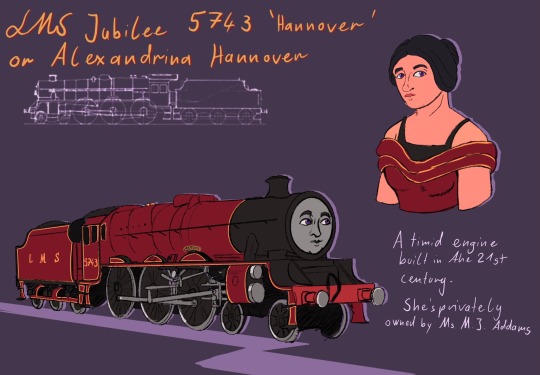
LMS Jubilee 5743 ‘Hannover’ or Alexandrina
A little OC that is a newly built Jubilee. She’s a timid engine but also kind, caring and brave. Ms. M. J. Addams smothers her with affection.
Henry and Scotsman fight over who should be the father figure for her. In her human form she’s short 5’2 to 5’3.
#ttte#thomas and friends#ttte oc#lms#lms jubilee#rws#railway series#I offer you a little baby#she’s so cute and i love her#engine OC#steam engine#a little red stanier baby#concept art#original character#character design#gently holds her baby
32 notes
·
View notes
Text

Had a nice day out today riding behind LMS Black 5 Class number 44871 on a charter service between Norwich and Stratford-upon-Avon (got on the train in March).
#steamlocomotive#steam locomotives#LMS#LMS Black 5#Black 5#railway#steam engine#steam engines#charter#Stratford-upon-Avon#March
7 notes
·
View notes
Text
Spooky Locos: Night of the Demon (1957) and a bit of a revelation about my main char...
youtube
Quick shot of a Black Five in this final scene of this movie. Them Black Fives are fairly sinister, eh SpookyHenry?


Yes, SpookyHenry is a bit diabolical...

Hen says hello to Robert the Devil Engine (who belongs to @seaswine)
Yes, like his boyfriend Harry, Hen is a bit of a demon...

What else could he have been, he went up against the Island of Sodor's ''God" out of pride and was imprisoned for it..., and never gave up his delightful cussedness...

#real locomotives#LMS 4-6-0 5MT Black Five#Youtube#SpookyHenry#thomasallgrownup#ttte henry#Henry The Green Engine#ttte humanisation#GunzelVerse Henry#ttte gijinka#Night of The Demon (1957)#GunzelVerse
22 notes
·
View notes
Text

Concept art of Apollo 5 Lunar Module (LM-1) firing its descent propulsion system (DPS).
Date: January 22, 1968
source
#Apollo 5#Lunar Module#LM-1#NASA#Apollo Program#B-type mission#Descent Propulsion System#Lunar Module Descent Engine#LMDE#Lunar descent stage propulsion#TRW VTR-10#Rocket Engine#Concept Art#January#1968#Space#my post
22 notes
·
View notes
Text




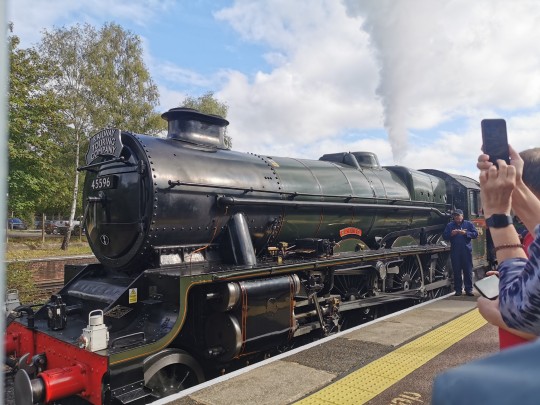
bananas
#steam locomotive#45596 bahamas#LMS#lms jubilee#4-6-0#real steamy locos#steam engine#bananas stop blowing off challenge#every fucking time#safety valve lifts and PSSHSHSHHSHHSHHGSGG
7 notes
·
View notes
Text


introducing the big four. the main troublemakers. berwyn (GWR) is probably the only one who still has this photo.
ask box is now open as well !
#inbetweenthelines#ibttl4#lner#lms#southern railway#gwr#great western railway#london midland scottish railway#london north eastern railway#ttte#the railway series#railway series#personification#gijinka#thomas the tank engine#thomas and friends#railway#british rail#oc art#digital art
42 notes
·
View notes